Do Cats Need Grains? 5 Surprising Truths Backed by Experts
If you’re a cat owner wondering ‘do cats need grains,’ you’re not alone. The debate about grains in cat food is ongoing, with experts and pet owners holding different views on whether cats need grains in their diet. Experts and pet owners have different views on this.
Many pet parents ask themselves: do cats need grains for optimal health? Figuring out what your cat needs nutritionally can be tricky, especially with so many conflicting opinions about whether cats need grains or if grain-free is better. There are so many food options out there.
This article will share surprising facts about feline nutrition and grains. You’ll learn from experts. This will help you choose the best food for your cat.
Table of Contents
The Evolution of Feline Nutrition
Understanding whether cats need grains requires examining their evolutionary history. Cats’ nutritional needs stem from their evolution as obligate carnivores, which shapes the answer to ‘do cats need grains‘ in their modern diets. As obligate carnivores, they have specific dietary needs. These needs are shaped by their biology and history.
Cats as Obligate Carnivores
When considering if cats need grains, it’s essential to understand that cats are biologically designed to consume meat. Their bodies are made to process lots of protein from animal sources.
Biological Adaptations for Meat Consumption
Cats possess a shortened digestive system specifically designed to efficiently break down protein and fat from meat sources. This evolutionary adaptation affects how we answer the question: Do cats need grains for digestive health? It’s designed to break down protein and fat from meat well. This helps them absorb nutrients efficiently.
Protein Requirements Compared to Other Pets
Cats need more protein than many other pets, like dogs. Their diet must be high in animal protein to meet their needs.
Historical Diet of Wild Cats
Wild cats mainly eat prey like small mammals, birds, and other animals. The makeup of their prey shows what cats naturally eat.
Prey Composition Analysis
The prey of wild cats is full of protein and fat, but low in carbs. This shows what’s best for cats to eat.
Incidental Plant Matter Consumption
While hunting, cats might eat some plant matter by accident. But, this is not a big part of their natural diet.
Understanding Cat Digestive Systems
Knowing how your cat’s digestive system works is key to picking the right food. Cats are meat-eaters, and their body shows this in how they digest food.
Unique Digestive Traits of Felines
Cats have special ways of digesting food. Their digestive system is short, like other meat-eaters. This helps them digest protein-rich foods fast.
Shorter Digestive Tract Implications
Because their system is short, food doesn’t stay in their body long. This is perfect for cats that eat a lot of animal proteins.
Stomach Acidity and Protein Digestion
Cats have very acidic stomachs. This acidity is great for breaking down proteins. It’s important for their digestive health.
Enzyme Production and Carbohydrate Processing
Cats are good at digesting proteins and fats. But they struggle with carbs because they don’t make much amylase.
Limited Amylase Production
Amylase is an enzyme that breaks down carbs. Cats don’t make much of it. This shows they don’t need many carbs in their diet.
Adaptations to Modern Diets
Even though cats are meant to eat meat, many cat foods include grains. Knowing this can help you choose the best food for your cat.
Do Cats Need Grains? The Scientific Perspective
Grain-free diets for cats have become popular. It’s important to look at the science behind grains in cat food. Studies have shown how cats digest grains and their benefits or drawbacks.
Research on Feline Grain Digestion
Modern studies examining whether cats need grains have produced fascinating results about feline digestive capabilities. Veterinary nutritionists have conducted research on different grains in cat diets.
Recent Studies from Veterinary Nutritionists
Cats can digest some grains, but it depends on the grain type and preparation. Cooked grains are easier for cats to digest than raw ones.
Digestibility Rates of Various Carbohydrates
The digestibility of carbs in cats varies. It depends on the carb type, cooking, and other nutrients. While cats are meat-eaters, they can get some benefits from grains.
Nutritional Value of Grains for Cats
Grains add calories and fiber to a cat’s diet. The caloric contribution helps meet energy needs. The fiber benefits support digestive health.
Caloric Contribution to Diet
Grains provide energy that can help meet cats’ daily caloric needs. This energy contribution is relevant when considering whether cats need grains as part of a balanced diet.
Fiber Benefits for Digestive Health
Fiber in grains helps keep a cat’s digestive system healthy. It prevents constipation and supports gut health.
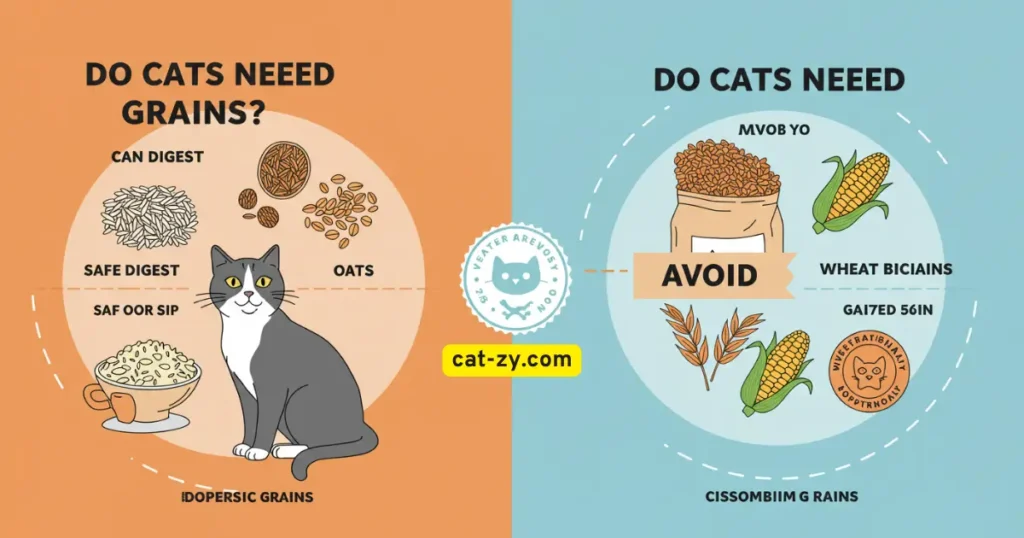
Truth #1: Cats Can Digest Some Grains
Cats are meat-eaters, but they can also digest some grains. This fact challenges the idea that cats can’t digest grains at all. Knowing which grains cats can eat and how they digest them helps us understand their nutrition better.
One surprising answer to ‘do cats need grains’ is that cats can indeed digest certain grains, challenging the notion that felines cannot process any grain-based nutrients.
Digestible vs. Indigestible Grains for Cats
Not all grains are the same for cats. Some are easier for them to digest than others. The type of grain and how it’s prepared can affect how well cats can digest it.
Cooked vs. Raw Grain Digestibility
Cooking grains makes them easier for cats to digest. Heat breaks down complex carbs, helping enzymes digest them better. Raw grains, on the other hand, are harder for cats to digest.
Processing Methods That Improve Absorption
Methods like extrusion or flaking make grains more digestible for cats. These processes use heat and pressure to break down the grain. This makes nutrients easier for cats to absorb.
The Role of Amylase in Grain Digestion
Amylase is key for digesting grains. It turns starches into sugars that the body can absorb. In cats, amylase from the pancreas helps digest grain-based carbs.
Pancreatic Enzyme Function
The pancreas makes enzymes like amylase for digesting nutrients, including grains. These enzymes are crucial for how well cats digest and use grain nutrients.
Adaptation to Domesticated Diets
Cats have learned to eat diets with grains. Their digestive system can handle certain grains, especially if they’re cooked and processed right.
Truth #2: Not All Grains Are Created Equal for Cats
Not all grains are the same for your cat’s diet. Some grains are good, while others can be bad. It’s important to know the difference to choose the right food for your cat.
Beneficial Grains in Cat Diets
Some grains are better for cats than others. Rice and oats are good because they are easy to digest and give energy.
Rice and Oats: Easily Digestible Options
Rice is easy on a cat’s stomach. Oats are full of fiber, which helps with digestion.
Nutritional Profiles of Cat-Friendly Grains
Grains like rice and oats give energy and important vitamins and minerals. They add variety and help keep your cat’s diet balanced.
Grains to Avoid in Cat Food
Some grains should be avoided because they can cause allergies or don’t offer much nutrition.
Common Allergens: Wheat and Corn
Wheat and corn can make some cats sick. They can cause itching, stomach problems, and skin issues.
Low Nutritional Value Fillers
Filler grains in cat food don’t give much nutrition. They can make the food less nutritious, leading to health problems if not balanced right.
Truth #3: Grain-Free Doesn’t Always Mean Healthier
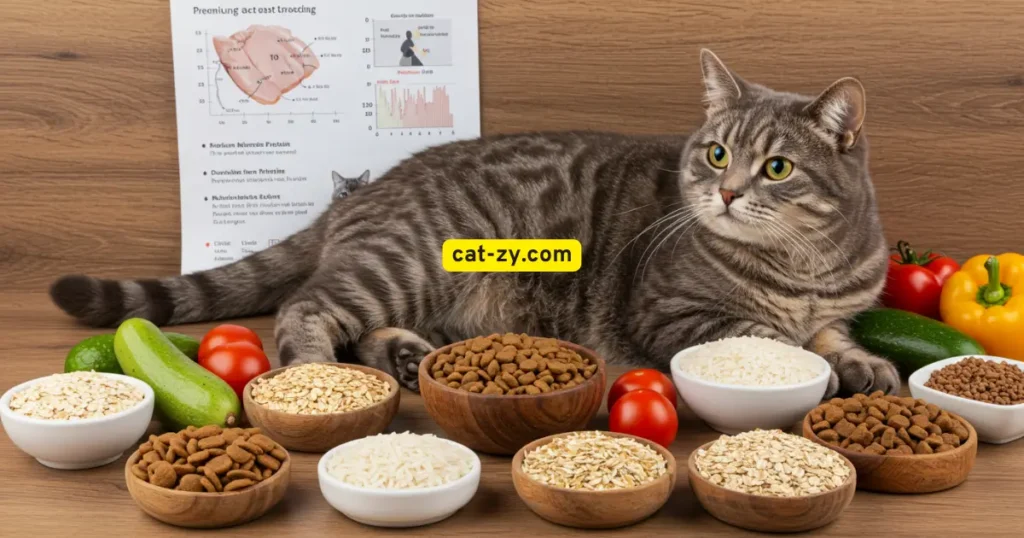
Grain-free diets for cats have become popular. It’s important to look at the science behind them. The pet food industry has changed a lot, moving towards grain-free options because people think they are healthier.
The popularity of grain-free diets has led many to assume cats don’t need grains, but the reality is more complex than this simple answer to whether cats need grains.
The Grain-Free Diet Trend
The trend towards grain-free diets is mainly driven by marketing. Many people think grains are bad for their cats. But, nutritional science shows a different truth. While some cats might do better without grains, it’s not true for all cats.
Marketing vs. Nutritional Science
Marketing has made grains seem like bad fillers. But the real value of cat food comes from many ingredients, not just grains.
Consumer Misconceptions About Grain-Free
Many cat owners think grain-free diets are closer to a cat’s natural diet. But, cats need protein from animal sources, not just whether or not they have grains.
Potential Issues with Grain-Free Formulations
Grain-free diets have raised concerns among vets and nutritionists. One big worry is the link to dilated cardiomyopathy (DCM) in cats.
DCM Concerns and FDA Investigations
The FDA is looking into DCM in cats eating grain-free diets. They’ve found issues with peas, lentils, and potatoes. It’s clear that not having grains doesn’t make a diet automatically better.
Replacement Ingredients and Their Implications
When grains are taken out, other carbs are added. The effects of these new ingredients are not always clear and can differ a lot.
Truth #4: Some Cats Have Genuine Grain Sensitivities
Grains aren’t needed in a cat’s diet, but some cats might still react to them. Grain sensitivities can show in different ways. Cat owners need to know the signs and symptoms.
Signs of Grain Allergies in Cats
Cats with grain allergies might show skin and coat problems, among other signs.
Skin and Coat Symptoms
Watch for too much scratching, redness, and hair loss. These could mean a grain allergy.
Gastrointestinal Reactions
Issues like diarrhea or vomiting can also point to a grain sensitivity.
Diagnosing Food Sensitivities in Felines
Figuring out grain sensitivities involves vet tests and changing diets.
Veterinary Testing Methods
Vets use different tests to see if your cat has a grain allergy.
Elimination Diet Protocols
An elimination diet can help determine which grains cause the problem. It means removing certain grains and watching how your cat reacts.
Knowing the signs of grain sensitivities and working with your vet can help your cat stay healthy and comfortable.
Truth #5: Grains Can Provide Beneficial Nutrients
Grains are often misunderstood in cat nutrition. But they can be a rich source of beneficial nutrients. Cats, being obligate carnivores, can get some of their needs from certain grains. These grains offer essential vitamins, minerals, and fiber.
Despite being obligate carnivores, the answer to whether cats need grains includes recognition that grains can provide valuable nutrients.
Essential Nutrients Found in Certain Grains
Certain grains are packed with nutrients that can boost a cat’s diet. These include:
B Vitamins and Trace Minerals
Grains like brown rice and oats are full of B vitamins and trace minerals. These are important for your cat’s health. They help with energy, metabolism, and more.
Fiber Types and Their Benefits
Grains offer different types of fiber, like soluble and insoluble. Soluble fiber helps with blood sugar and gut health. Insoluble fiber keeps bowel movements regular.
How Grains Complement Animal Protein in Cat Food
Grains support cat food by adding balanced energy sources and cost-effective nutrition solutions. Mixing grains with animal protein makes balanced diets. These diets meet a cat’s needs without losing taste or value.
Balanced Energy Sources
Grain carbs give cats quick energy, alongside protein and fat. This mix keeps energy levels up all day.
Cost-Effective Nutrition Solutions
Adding certain grains to cat food makes it more affordable. This is great for owners who want quality food without breaking the bank.
Commercial Cat Food: Grain-Inclusive vs. Grain-Free Options
Choosing the right commercial cat food is important. You need to know the difference between grain-inclusive and grain-free options. As a cat owner, you face many choices, each claiming to be the best for your cat.
Reading and Understanding Cat Food Labels
To make a good choice, you must learn to read cat food labels. This means understanding the ingredient list and nutritional statements.
Ingredient List Interpretation
The ingredient list can be tricky, but it’s key to know what you’re feeding your cat. Ingredients are listed by weight, with the heaviest first. Look for high-quality protein sources like chicken or salmon as the first ingredient.
Nutritional Adequacy Statements
Nutritional adequacy statements show if the food meets AAFCO standards. These statements are important to ensure the food is complete and balanced for your cat.
Quality Indicators in Both Diet Types
Both grain-inclusive and grain-free cat foods can be high quality. Look for high protein content from named animal sources. Also, make sure the food meets AAFCO standards.
Protein Content and Sources
The protein content and sources in cat food are key to your cat’s health. Cats need a diet rich in animal protein. Look for foods with named protein sources like chicken, beef, or fish.
AAFCO Compliance Standards
It’s vital to choose cat food that meets AAFCO standards. AAFCO sets the nutritional standards for complete and balanced pet foods. Following these standards ensures your cat’s dietary needs are met.
Homemade Cat Food Considerations
Thinking about a homemade diet for your cat? It’s key to know what nutrients they need. A balanced diet keeps your cat healthy and happy.
Balanced Nutrition Requirements
To give your cat balanced nutrition, add important nutrients to their food. This includes vitamins, minerals, and proteins for their health.
Essential Nutrient Profiles
Cats need special nutrients like taurine, vitamin A, and arachidonic acid. These are vital for their heart, eyes, and skin.
Common Deficiencies to Avoid
Homemade cat food can lack calcium, vitamin D, and omega-3 fatty acids. Talking to a vet can help you avoid these issues.
The Role of Grains in Homemade Recipes
Grains can add fiber, vitamins, and minerals to homemade cat food. But it’s important to know the right amount to avoid imbalances.
Appropriate Grain Inclusion Ratios
Grains should make up no more than 10% of your cat’s diet. This keeps the protein-rich ingredients in the spotlight.
Preparation Methods for Optimal Digestion
Cooking grains can make them easier for your cat to digest. Boiling or baking can help your cat’s digestive system.
Transitioning Your Cat’s Diet Safely
Changing your cat’s diet needs patience and a careful plan to prevent health problems. A sudden switch can upset their stomach. So, it’s key to introduce the new food slowly.
Gradual Introduction Methods
Begin by mixing a bit of the new food with their current diet. Slowly add more new food over time.
The 7-10 Day Transition Schedule
It’s often suggested to switch their food over 7-10 days. This helps their body get used to the new ingredients.
Mixing Techniques for Fussy Eaters
If your cat is picky, try warming the new food a bit. Or add a little low-sodium chicken broth to make it tastier.
Monitoring Your Cat’s Response to Dietary Changes
Keep an eye on your cat’s health while changing their diet. Look out for signs of upset stomach or allergies.
Positive Health Indicators
Good signs are a healthy appetite, normal poop, and lots of energy. These show the new diet is working well for your cat.
Warning Signs to Watch For
Be alert for vomiting, diarrhea, tiredness, or less interest in food. If you see these, talk to your vet for help.
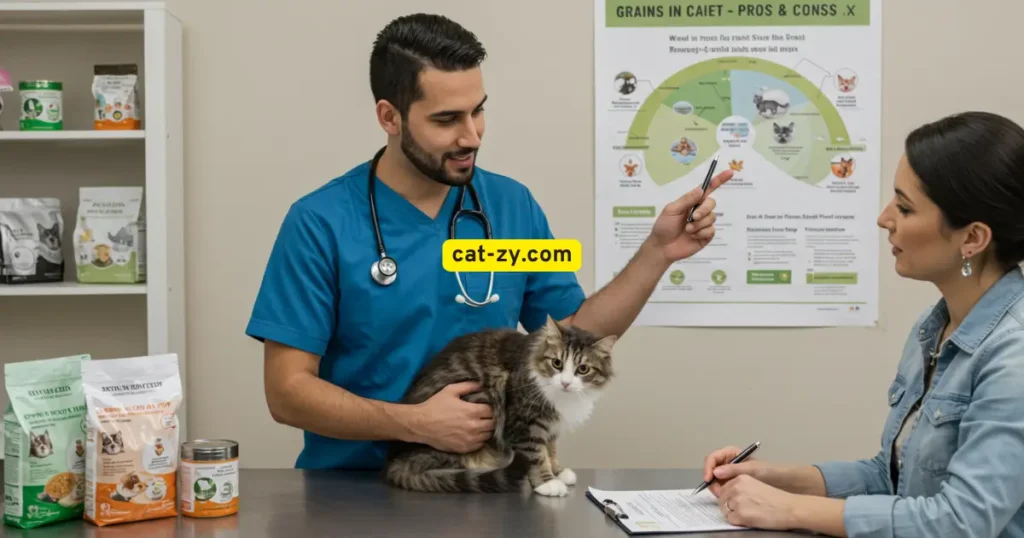
Conclusion: Do Cats Need Grains? Making Informed Choices
So, do cats need grains? The answer is nuanced. While cats don’t require grains for survival, the question ‘do cats need grains’ doesn’t have a simple yes or no answer. The evidence shows that cats can digest certain grains, and some cats may benefit from grain inclusion while others thrive without them. The key to answering ‘do cats need grains’ lies in understanding your individual cat’s needs. It shows the importance of a balanced approach to grains.
Cats can digest some grains, and knowing the differences is important. Also, being aware of grain-free diet drawbacks helps. If your cat has a grain sensitivity, spotting signs and diagnosing is crucial.
Grains add nutrients that complement animal protein in your cat’s diet. When picking cat food or making homemade meals, think about grain’s nutritional value. This ensures your cat gets the best nutrition for their needs.
Understanding your cat’s dietary needs is essential for good nutrition. This article’s insights help you create a personalized nutrition plan. It supports your cat’s health and well-being, making informed choices about cat nutrition and grain inclusion.
FAQ
Do cats need grains as essential nutrients?
No, cats don’t need grains as essential nutrients. They are obligate carnivores requiring animal protein, but some cats can benefit from certain grains as supplementary nutrition.
Can cats digest grains if they don’t need grains for survival?
Yes, cats can digest some grains even though they don’t need grains for survival. Cooked grains like rice and oats are more digestible than raw or whole grains.
Are grains essential for a cat’s diet?
No, cats don’t need grains in their diet. They are meat-eaters and need protein from animals. But, some grains can add good nutrients.
Are grain-free diets better since cats don’t need grains?
Not necessarily. Just because cats don’t need grains doesn’t mean grain-free is automatically better. Some grain-free diets have been linked to heart problems in cats.
Can cats digest grains?
Yes, cats can digest some grains. But, it depends on the grain and how it’s prepared. Cooked grains like rice and oats are easier for them to digest than raw or whole grains.
What are the benefits of grains in cat food?
Grains offer important nutrients like B vitamins, minerals, and fiber. These can help support a cat’s health along with animal protein in their food.
Are grain-free diets always healthier for cats?
No, grain-free diets aren’t always better for cats. Some cats might do well without grains due to allergies. But, others might not need them. Grain-free diets can also lead to health issues like heart problems.
How can I determine if my cat has a grain sensitivity?
To check if your cat is sensitive to grains, talk to a vet. They can look for signs like skin issues or stomach problems. They might suggest tests or a special diet.
What are some common grains used in cat food?
Common grains in cat food are rice, oats, barley, and wheat. Some foods also have ancient grains like quinoa or Kamut.
How should I transition my cat to a new diet that includes or excludes grains?
To change your cat’s diet, start by mixing the new food with their old food. Do this over 7-10 days to avoid upset stomachs. Watch how your cat reacts and adjust as needed.
Can I make homemade cat food with grains?
Yes, you can make homemade cat food with grains. But, make sure it’s balanced and complete. It should have all the nutrients your cat needs. Get help from a vet or animal nutritionist to make a good recipe.

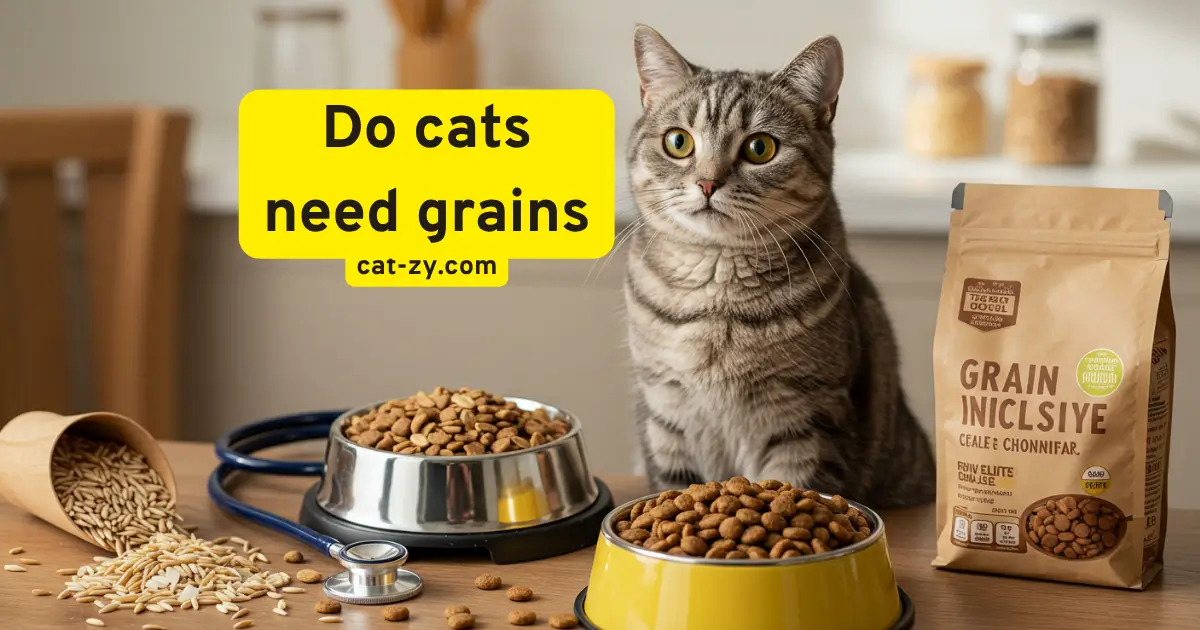
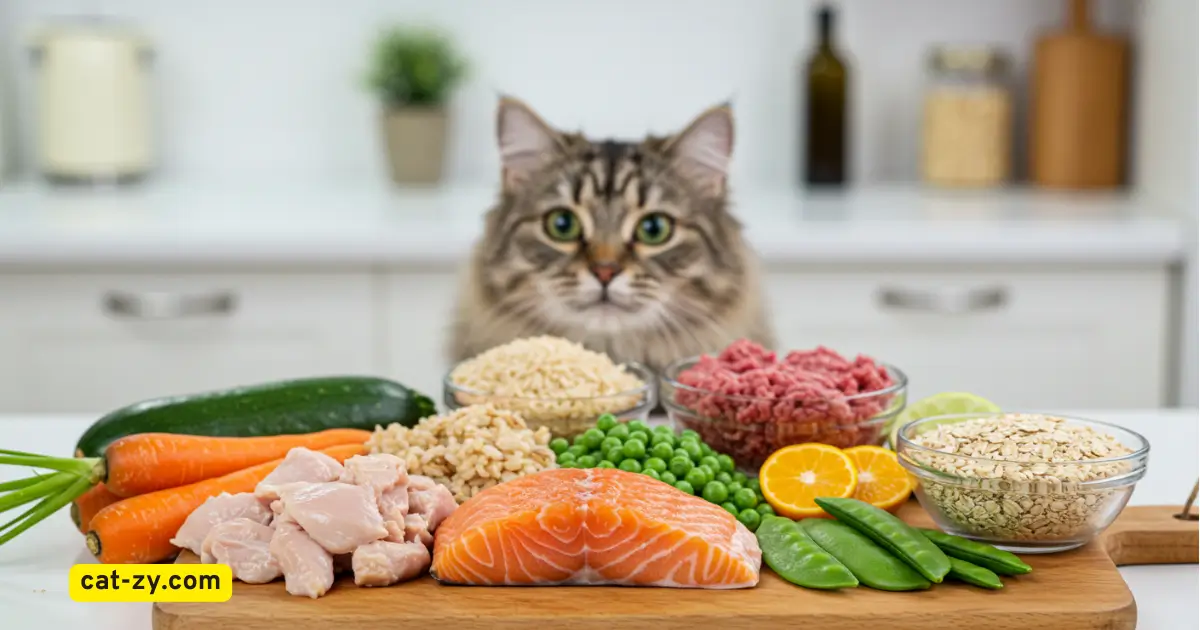
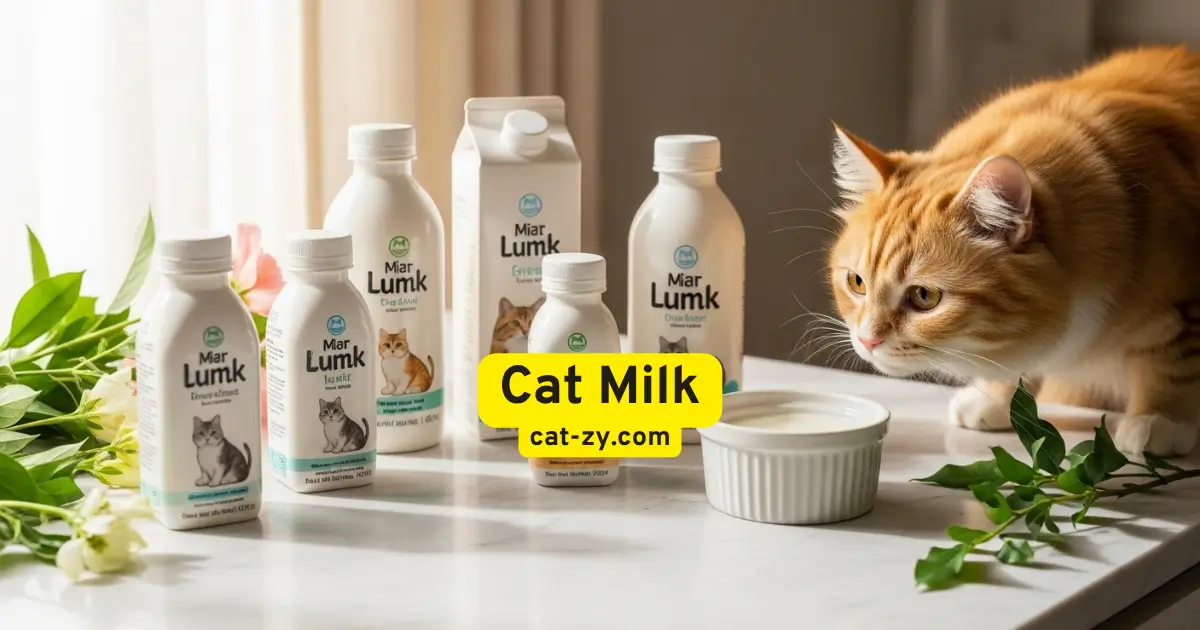
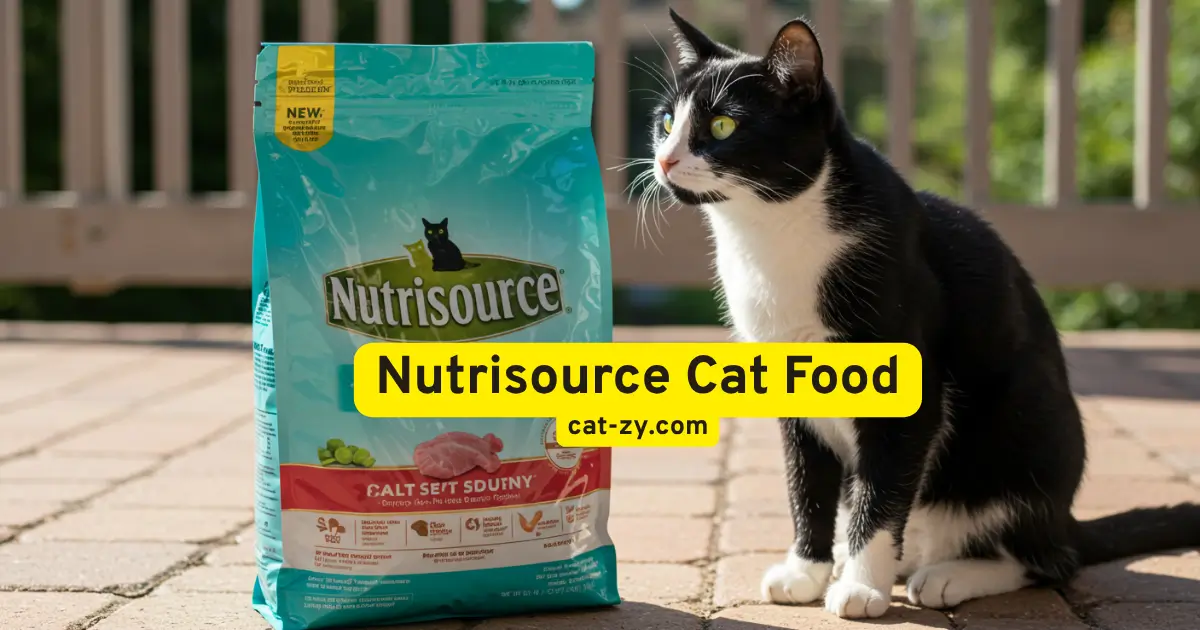
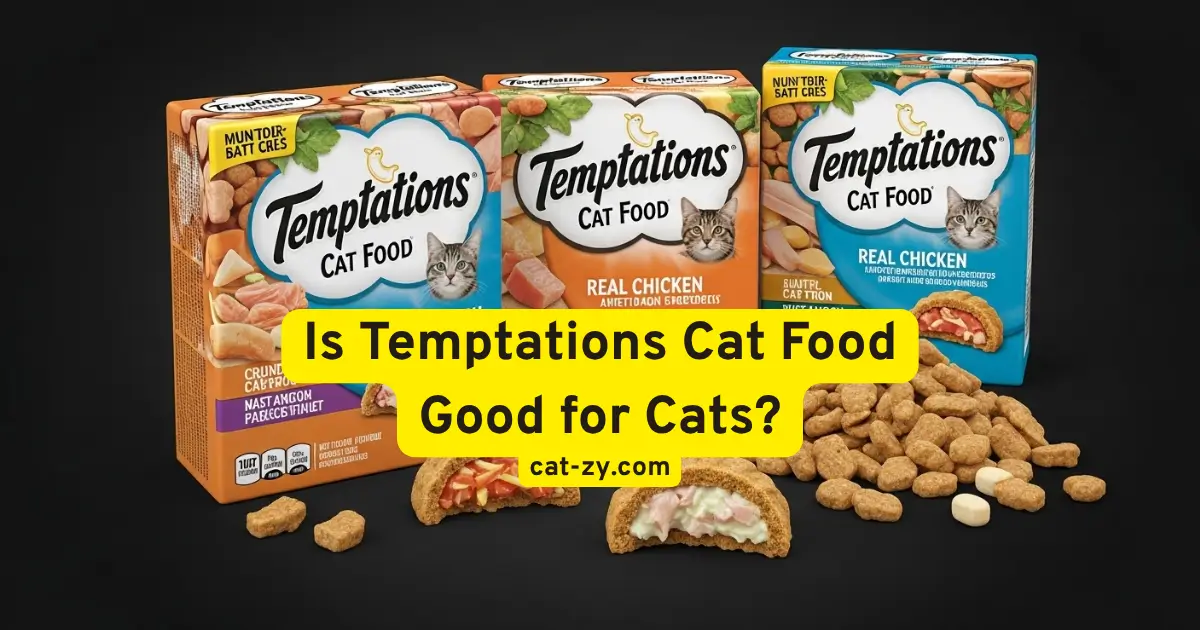
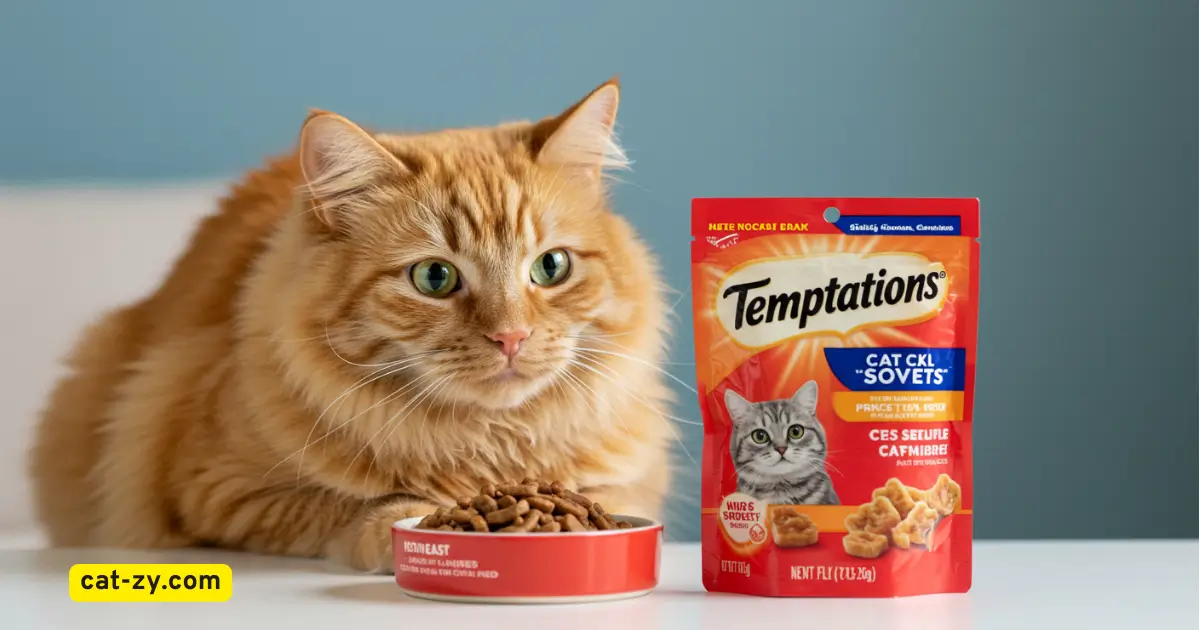

2 Comments
Comments are closed.